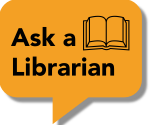Copyright, a form of intellectual property law provided for in the U.S. Constitution, protects original works of authorship fixed in a tangible medium of expression, including literary, dramatic, musical, and artistic works, such as poetry, novels, movies, songs, computer software, and architecture.
Copyright does not protect facts, ideas, inventions, discoveries, systems, methods of operation, titles, slogans, or short phrases, although it may protect the way these things are expressed. Copyright covers both published and unpublished works.
Copyright applies automatically when a work is created and does not require any formal registration or publication.
Generally, the owner of a copyright has the exclusive right to do and to authorize others to do any of the following:
Statutory limitations on a copyright owner’s exclusive rights regarding an original “work of authorship” include fair use and library and educational uses when certain criteria are met. 17 U.S.C. §§107, 108, 109, and 110 provide for and define the extent of these limitations.
Provided for in 17 U.S.C. §107, fair use is determined by examining four factors; the purpose of the use, the nature of the work used, the amount of the work used, and the effect the use will have on the potential market for the work. All four factors must be examined before a “good faith” determination can be made regarding the fair use of a copyrighted work. Each such determination is made on the unique facts of the use.
Fair Use refers to a provision in the US Copyright Act, Section 107 (Title 17, US Code), which states:
Notwithstanding the provisions of sections 106 and 106A, the fair use of a copyrighted work, including such use by reproduction in copies or phonorecords or by any other means specified by that section, for purposes of criticism, comment, news reporting, teaching (including multiple copies for classroom use), scholarship, or research, is not an infringement of copyright. In determining whether the use made of a work in any particular case is a fair use the factors to be considered shall include
The fact that a work is unpublished shall not itself bar a finding of fair use if such finding is made upon the consideration of all the above factors. In order to qualify for Fair Use, the material in question must be weighed against the four factors listed above. Because no hard and fast rules for fair use compliance exist, all decisions concerning fair use must be carefully documented. The Library staff will assist faculty in determining whether usage of Library materials is fair, and documenting the factors for and against fair use as outlined above, on case-by-case basis.
When interpreting the four factors of the Fair Use provisions outlined in the Copyright Act, §107 (Title 17, US Code), the Library uses a slightly more detailed version of the following rubric to make decisions on what materials may be used without permission.
| May be Fair Use: | Ask for Permission: | |
|---|---|---|
| Character of the Use | Private, educational, nonprofit | Commercial, public entertainment |
| Nature of the work | Published fact | Creative work (published or unpublished) |
| Amount/substantiality used | Small percentage of whole work; Portions used are not central to work as a whole |
Large percentage of whole work; Portions used are central to the work as a whole |
| Effect on potential market | Single use (one semester or class); Small audience; Spontaneous use |
Multiple use (multiple semesters or classes); Large public audience; Systematic and continuing use |
Faculty members may also wish to consult the Resources for Teaching Faculty section of the Know Your Copy Rights: Using Copyrighted Works in Academic Settings website, maintained by the Association of Research Libraries (ARL).
Another resource on Fair Use is the January 2012 ARL Code of Best Practices in Fair Use for Academic and Research Libraries, a clear and easy-to-use statement of fair and reasonable approaches to fair use developed by and for librarians who support academic inquiry and higher education. The Code was developed in partnership with the Center for Social Media and the Washington College of Law at American University.
Please note that the guidelines and information above are not meant to constitute legal advice.

